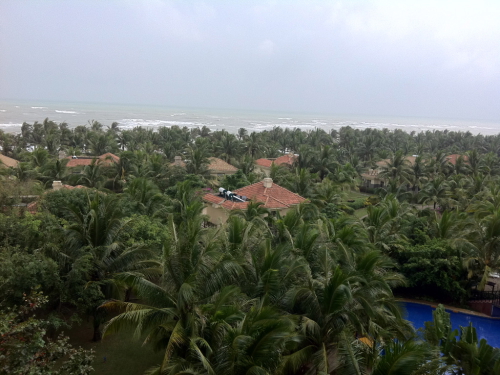A minor variation in sea surface temperature may result in significant air temperature change. El Nino-Southern Oscillation (ENSO), the irregularly periodic variation in winds and sea surface temperatures over the tropical eastern Pacific Ocean, is one of the strongest drivers that affect China and global climate on seasonal and inter-annual timescales. ENSO warm phase (normally known as El Nino) and cold phase (La Nina) can both trigger extreme weather events which have devastating socio-economic impacts. Forecast of ENSO is therefore significant for us to be better “weather-ready”. 2018 summer witnessed frequent typhoons heat waves and floods in China, what will winter be like?
A study recently published in Chinese Science Bulletin suggested a moderate El Nino is under development, which may induce a weak China winter monsoon, characterized by a warm winter.
This study is based on the Flexible Global Ocean-Atmosphere-Land System model Finite Volume version 2, Chinese Academy of Sciences(CAS FGOALS-f2), a next-generation climate system model developed by scientists in the State Key Laboratory of Numerical Modeling for Atmospheric Sciences and Geophysical Fluid Dynamics (LASG), the Institute of Atmospheric Physics, CAS and run in China’s Tianhe-2 supercomputer at the National Supercomputer Center in Guangzhou. The FGOALS-f2 S2S reforecast experiments include 24 ensemble members, while the real-time prediction uses 35 ensemble members.
Using FGOALS-f2 climate prediction system, scientists conducted a real-time prediction of ENSO in winter and the Indian Ocean Dipole (IOD) in autumn of 2018/2019. The system launched the ensemble forecasting experiment for the next six months on July 20, 2018. The results show that a moderate El Nino is developing in the equatorial Middle East Pacific region This El Nino event is atypical Eastern type of El Nino.

A winter day in Bo'ao, Hainan Province, China. Photo taken on Nov 29, 2018. (Credit: BAO Qing)
"This means for North China, the meteorological conditions are expected to have adverse effects on atmospheric diffusion; while for South China, warm and wet conditions are likely to prevail”, explained Prof. BAO Qing, the corresponding author of the paper.
The seasonal prediction products from FGOALS-f2 system have been submitted to and used operationally by the National Climate Center of the China Meteorological Administration, as well as the National Marine Environmental Forecasting Center of China since June 2017.
To provide better support for disaster prevention and mitigation, scientists will continue to investigate the equatorial sea surface temperature anomalies in the eastern Pacific and Indian oceans. “Our team will continue to update the prediction results on the 20th of every month, releasing them (with respect to ENSO, the IOD, climate, and average monthly weather in China) on the website, and report the latest prediction results via the WeChat public platform.” Prof. BAO introduced.
Citation: Bao, Qing*, Xiaofei Wu, Jinxiao Li, Lei Wang, Bian He, Xiaocong Wang,Yimin Liu, Guoxiong Wu, 2018: Outlook for El Nino and the Indian Ocean Dipole in autumn-winter 2018–2019,Chinese Science Bulletin, doi: 10.1360/N972018-00913, http://engine.scichina.com/doi/10.1360/N972018-00913
Media contact: Ms. LIN Zheng, jennylin@mail.iap.ac.cn
